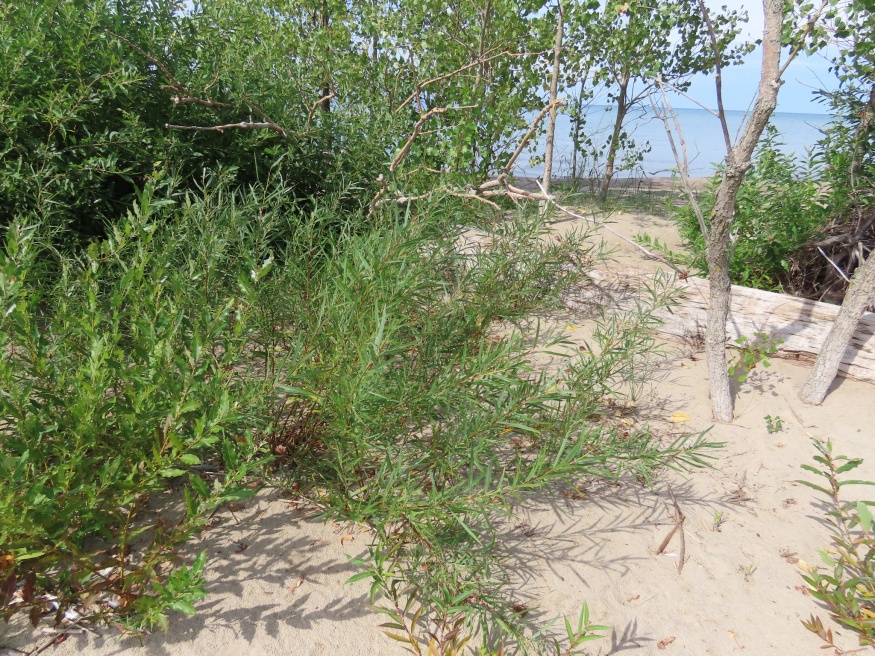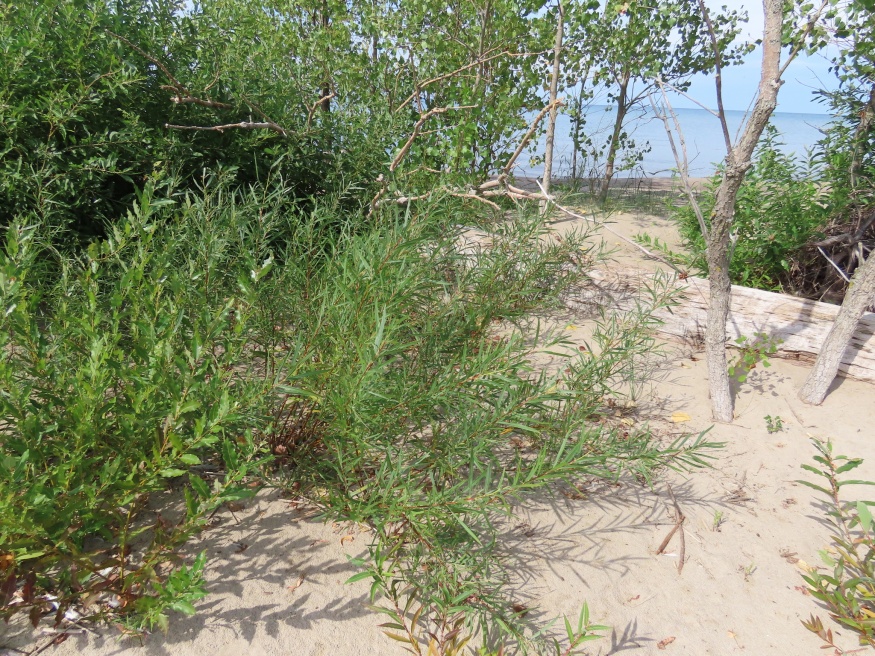About
The sandbar willow is a medium shrub native to the Northern Great Plains, Eastern, and Western North America. When water is in abundance, the shrub forms thickets on sand or gravel surfaces of riverbanks, shorelines, roadsides or ditches. It is invasive in some areas, known to aggressively spread, and overtake habitats. This should be considered with using it in landscaping.
The sandbar willow has the most narrow leaves of all willows. Serrated edges occur with wide spaces between teeth and pointed at both ends. Catkins are produced on separate plants as male or female flowers. It is very closely related to the narrowleaf willow and some consider them to be the same species.
Despite it's aggressive nature, the sandbar willow does provide various ecological benefits. This includes use as erosion control on stream banks and in restoration projects. It also has beneficial value to bumble bees and native bees. Forage for deer and shelter for game birds and other animals are provided by it's dense cover.
References
Lady Bird Johnson Wildflower Center. (2019). Salix interior. Retrieved from https://www.wildflower.org/plants/result.php?id_plant=SAIN3
USDA NRCS Northeast Plant Materials Program. (2002). Sandbar Willow. Retrieved from https://plants.usda.gov/factsheet/pdf/fs_sain3.pdf?. Accessed 19 May 2018.
The Ufore Nursery & Lab. (n.d.). Sandbar Willow - Salix interior. Retrieved from https://trees.umn.edu/sandbar-willow-salix-interior
Natural Resource Conservation Service. (n.d.). Salix interior Rowlee. Retrieved from https://plants.usda.gov/core/profile?symbol=SAIN3
Shipping
We currently ship seeds to all Canadian provinces and ship plants just within the provinces of British Columbia and Alberta. Seeds ship year-round and usually take a few days (or longer if you are ordering from a distant province). It usually takes 2-5 business days in the mail for plant orders once shipped. Plants are generally available from May to September and can be reserved during off season; Shipping costs are calculated during checkout. Seed orders over $100 ship free! See Shipping for more details.

